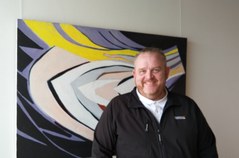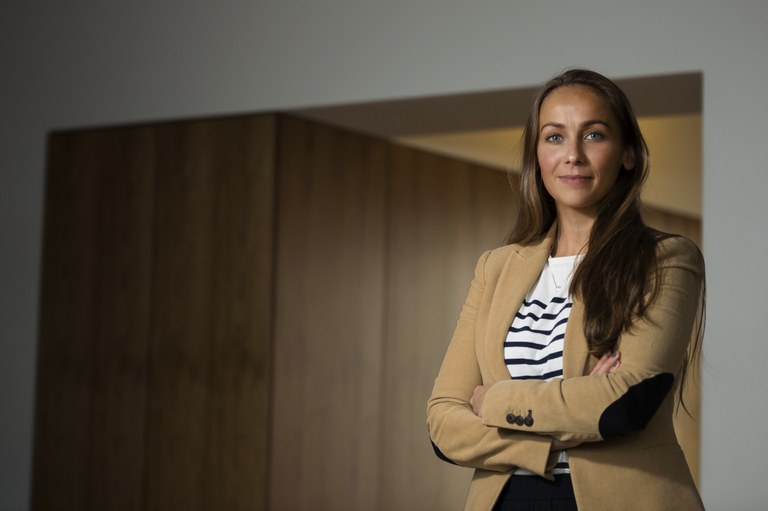No fish is wasted with Icelandic technology
Iceland’s fisheries industry has undergone a revolution in recent years. Fishing companies and tech firms have worked together to develop high tech solutions. Iceland is a global leader when it comes to developing fish processing technology. Productivity has shot up, and new computerised machinery is being exported.
Depressing, monotonous workplaces, unskilled workers in rain coats and wellies along conveyor belts wielding knives and filleting fish in a cold and wet processing hall. This has been the image of the fisheries industry so far, but it is no longer the case. At least not in Iceland.
The fisheries industry has undergone enormous change. The monotonous tasks have disappeared. Instead, high tech is being used to maximise productivity and revenues. Workers are busy carrying out quality controls. They push buttons and monitor computer screens to make sure the machines are working as they should. Workers rotate between different tasks. The workplaces are no longer so monotonous.
Maximising the value of the fish
Things started changing in the 1990s, when Iceland began automating fish processing. Icelandic fishing companies developed the theory that they could maximise productivity and the value of the fish by using every part of it – not only the filets, but also bones, skin, everything. This is how Iceland’s fisheries industry operates today.
During the 1990s, pelagic fish factories froze 150 kilos of fish per worker per day. Today, the factories can freeze 1,500 kilos per person a day. The increase is due to new technology developed through cooperation between Iceland’s fisheries and tech companies.
“It takes the fisheries industry only a few days to produce the same amount of fish as it takes agriculture an entire year to produce lamb meat,” says Hörður Sævaldsson, Assistant Professor at the University of Akureyri.

The reason behind this development is cooperation between fish factories, fish processing plants and tech companies. The fisheries industry tested the new technology and opened the doors for inspectors who could come in and control it all. The industry on its part showed patience in cases when the technology did not work as intended. This way, new and better technology was created, little by little.
Thanking the fishing companies
Heiðrún Lind Marteinsdóttir, CEO of Fisheries Iceland, thanks the fishing companies for having taken part in the development of the new technology. She says they invested and begun using the new technology before it was fully developed. They have shown great understanding and patience during the development phase.
“The development has been based on the goodwill of the fishing companies. Innovations are worthless for pioneers if they are not carried forward and tested by the companies,” agrees Hörður Sævaldsson.
“The new technology sometimes reduced productivity for a period of time, damaged production and sometimes proved difficult to handle. But you have to remember that you have to invest to make a profit.”
Developed through cooperation
The development has been swift, especially over the past ten years as cooperation between fishing companies and the tech business really accelerated. Investments and increased cooperation meant the new technology developed faster than before. The aim was to increase productivity.

Heiðrún Lind points out that investments in the fisheries industry has been record high in the past three to four years. Companies have invested both in new trawlers with onboard freezing capabilities, as well as new technology – onshore and offshore.
“Rather than importing the technology, the companies have developed machinery and technology together, which can then be exported. The new technology has become a new revenue source for the fisheries industry,” she says.
Industry renewal
Since the end of the 1990s, Icelandic fishing companies’ equipment has seen a dramatic renewal. Trawlers are fewer and bigger, and onboard technology has improved. The development has meant that Icelandic companies now work together across different trades, in order to be able to offer comprehensive technological solutions which can be exported as a whole.
As an example, Hörður Sævaldsson mentions a fourth generation fishery plant for pelagic fish. In 2013 the Faroe Islands purchased the first complete fishery plant for the processing of pelagic fish from Iceland. Since then, Iceland has sold fishery plants to the Faroes, Japan and Russia.
Foreign companies have also begun buying freezing houses for the processing of groundfish.
“Iceland develops and produces the computer technology and the machinery. The factory is built in the customer’s country. Iceland delivers the new technology and starts up the machines,” explains Hörður.
Major increase in productivity
Iceland’s fisheries industry has been part of the development from day one. Workers used to cut fish into pieces, rinse bones and look for parasites. Fish factories have been equipped with new machines and computers, and have tested them in order to improve the technology. Today, the new technology takes care of what used to be done by hand.
X-ray cameras scan every filet and the machines rinse and cut the filets using water jets.
“For the industry, the result has been a major increase in productivity. Thanks to technology that cuts fish filet using water jets, you double productivity using the same number of staff,” explains Hörður.
Untouched by hands
Axel Pétur Ásgeirsson is responsible for marketing at the production company Curio. They make fish processing machinery which see to it that fish no longer is touched by hands. The entire process is automated and computerised. Axel believes the understanding and goodwill shown by Iceland’s fisheries industry has made the development of the new technology possible.
“Other countries see that the best technology can be found in Iceland. We exploit the fish in the best way, we have the best raw material and we are working hard to improve further. Machines now take care of the processing, and can produce enormous amounts without growing tired. The technology has become an export,” he says.
Need to study
The fisheries industry used to be reliant on a large number of workers, and it was not always easy to find people to hire. But recent developments have led to major cuts in staffing, both among fishermen and workers at the fishery plants. The machines mean improved productivity, and the number of employees is falling. Staff now need to study in order to work in the fisheries industry.
“It is always difficult to introduce changes. But we need to do it in order to develop the industry. We have to make sure employees are given other jobs,” says Heiðrún Lind.
Hörður Sævaldsson believes Iceland is lucky, as there are jobs to be had in other sectors, like tourism, construction and fish farming.
“Most people have managed to find new jobs. The fisheries industry has also put effort into training employees to work with the new technology,” says Assistant Professor Hörður Sævaldsson.
Heiðrún Lind underlines that restructuring has led to less pollution from the Icelandic fisheries industry. There are fewer trawlers, machines have changed. The aim is to maximise income by processing the fish from start to finish, while Iceland tries to keep its global promises on cutting pollution.
- Untouched by hands
-
Axel Pétur Ásgeirsson is in charge of marketing at the production company Curio, which produces fish processing machines that remove the human element (above)
 Follow us on Facebook
Follow us on Facebook
